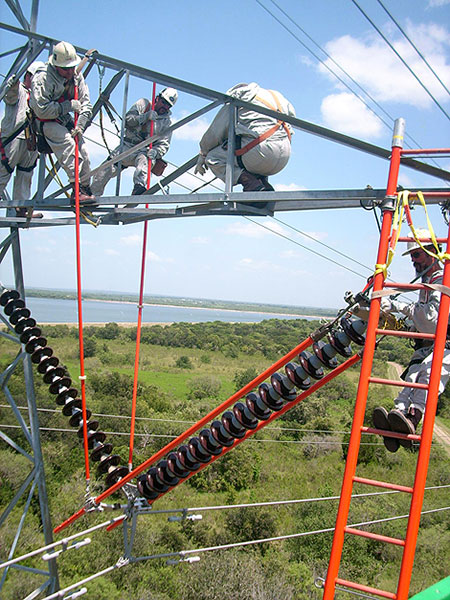Every year, hundreds of construction workers are killed on the job and more than a third die from falls, the number one cause of accidental deaths in the industry. The tragic loss of our brothers and sisters is made all the more bitter because every death or injury from a fall is preventable with proper training and the use of appropriate fall protection.

|
| Safety Stand-Down Week May 6-10 will focus on preventing the leading cause of death in the construction industry: falls.
|
From May 6-10, the IBEW is joining with the Occupational Safety and Hazard Administration, the North American Building Trades and the Center for Construction Research and Training for the 6th annual National Fall Prevention Safety Stand-Down.
“This is great opportunity for our signatory contractors to take time for safety demonstrations, training in fall prevention and a review of site safety rules,” said Safety Department Director Dave Mullen.
OSHA spokespeople said they expect thousands of work sites and millions of workers to observe the stand down worldwide in 2019.
“Our commitment to safety is part of what separates our journeymen and apprentices from the rest of the industry. We built that reputation by using the best training every day and putting nothing in front of getting home safe,” said President Lonnie R. Stephenson. “This is an opportunity to recommit to doing the right thing, every time.”
In 2017, of 971 construction fatalities, 366 resulted from falls to a lower level.Federal law requires employers to provide fall protection whenever workers are exposed to a potential fall over 6 feet, but fall injuries happen from standing on step stools, ramps and ledges or even tripping or slipping.
Every work site is unique, and employers have many choices in how they protect workers. The Safety Stand-Down is an opportunity for supervisors, foremen and rank-and-file workers to make sure everyone understands site work rules and put safety back where it belongs as priority one.
“Every IBEW member, from a journeyman close to retirement to an apprentice on their first job, has the training they need to stay safe,” Stephenson said. “These safety meetings don’t need to take a long time to be effective with our membership. But every minute we spend rededicating ourselves to coming home the way we left pays itself back a thousand-fold.”
Mullen also encouraged contractors, foremen and Business Managers to take one further step during the safety demos or tail gate talks and talk about the IBEW’s injury reporting system. On the IBEW’s Safety Department website (ibew.org/Safety-Health) is a link to Form 173, the official reporting mechanism that allows the IBEW to keep track of how our members are hurt on the job.
Only about 20% of locals have filed injury, illness or fatality reports, a number that has grown in recent years but is still far below the targets Stephenson set.
“We have made enormous progress streamlining the reporting process to make it easy for local staff to get us the information we need. Now we need your help to get the data we use to spot trends and prevent future injuries or death,” Mullen said.
Information gathered by the International Office will never be used against signatory contractors or members, Mullen said.
“My job isn’t to punish anyone. Our interest is 100% preventing future injuries and saving lives,” he said.
For more information on how to run a stand-down briefing, OSHA has suggestions on their website osha.gov/stopfalls/